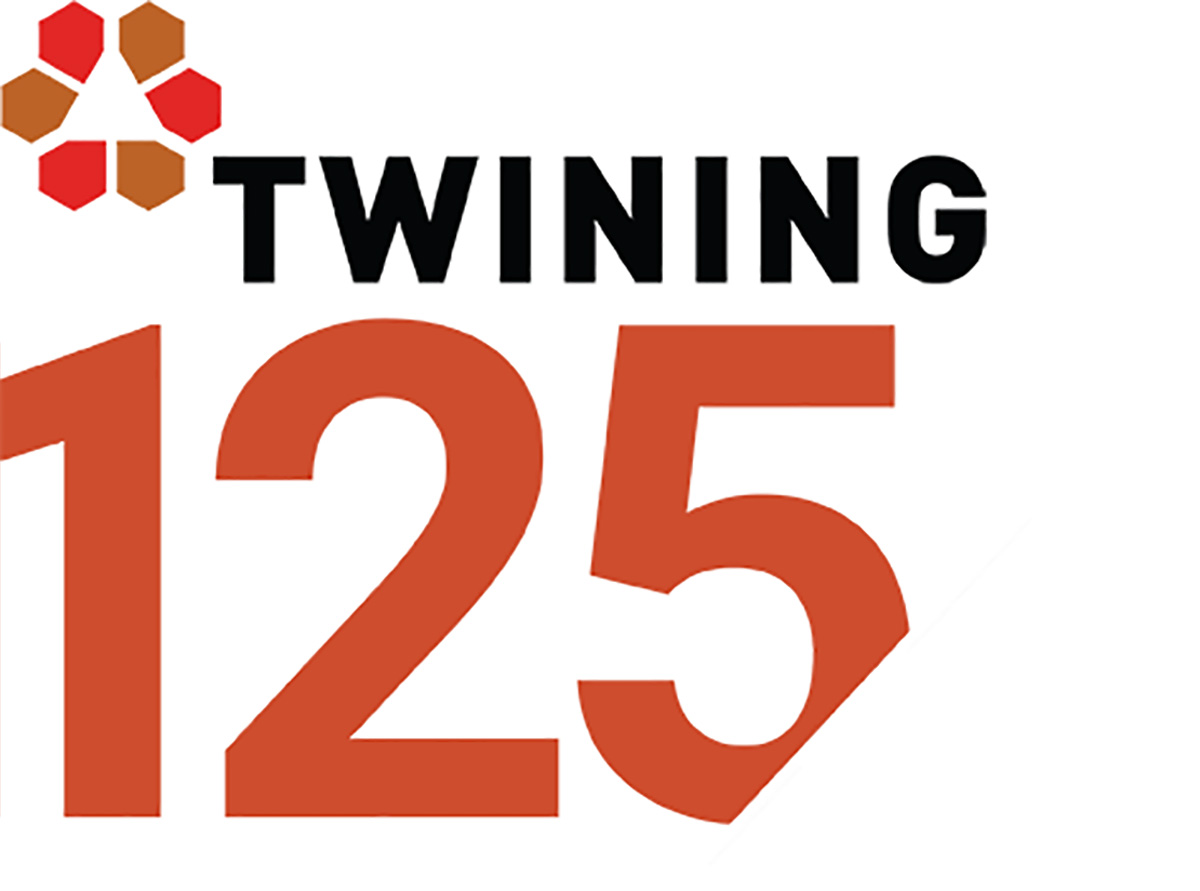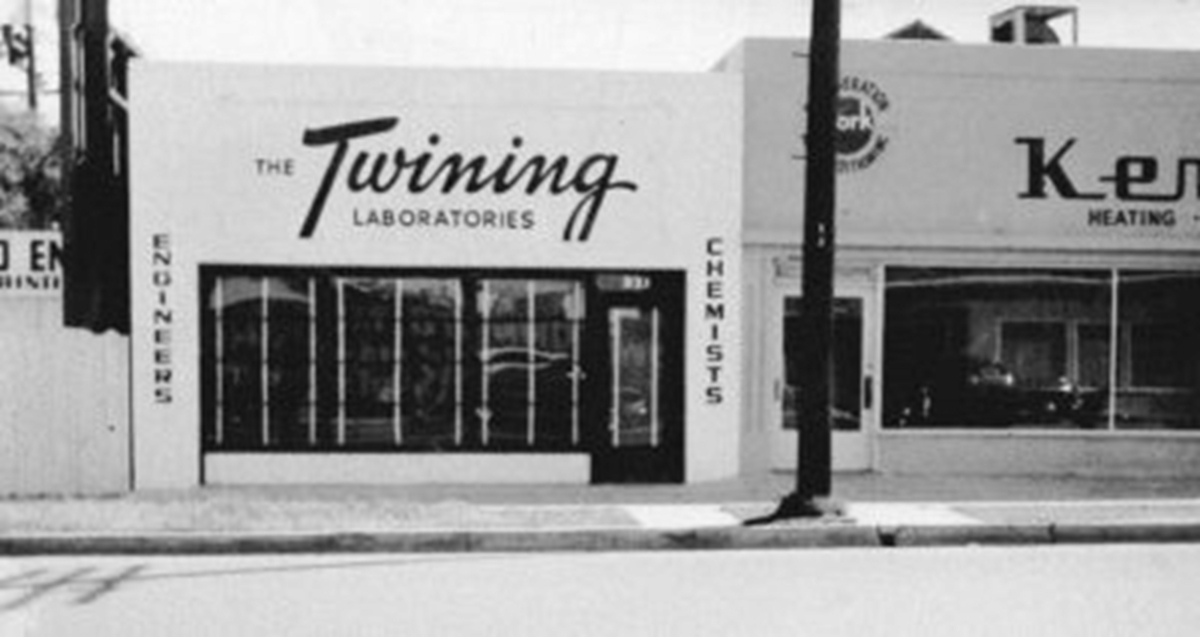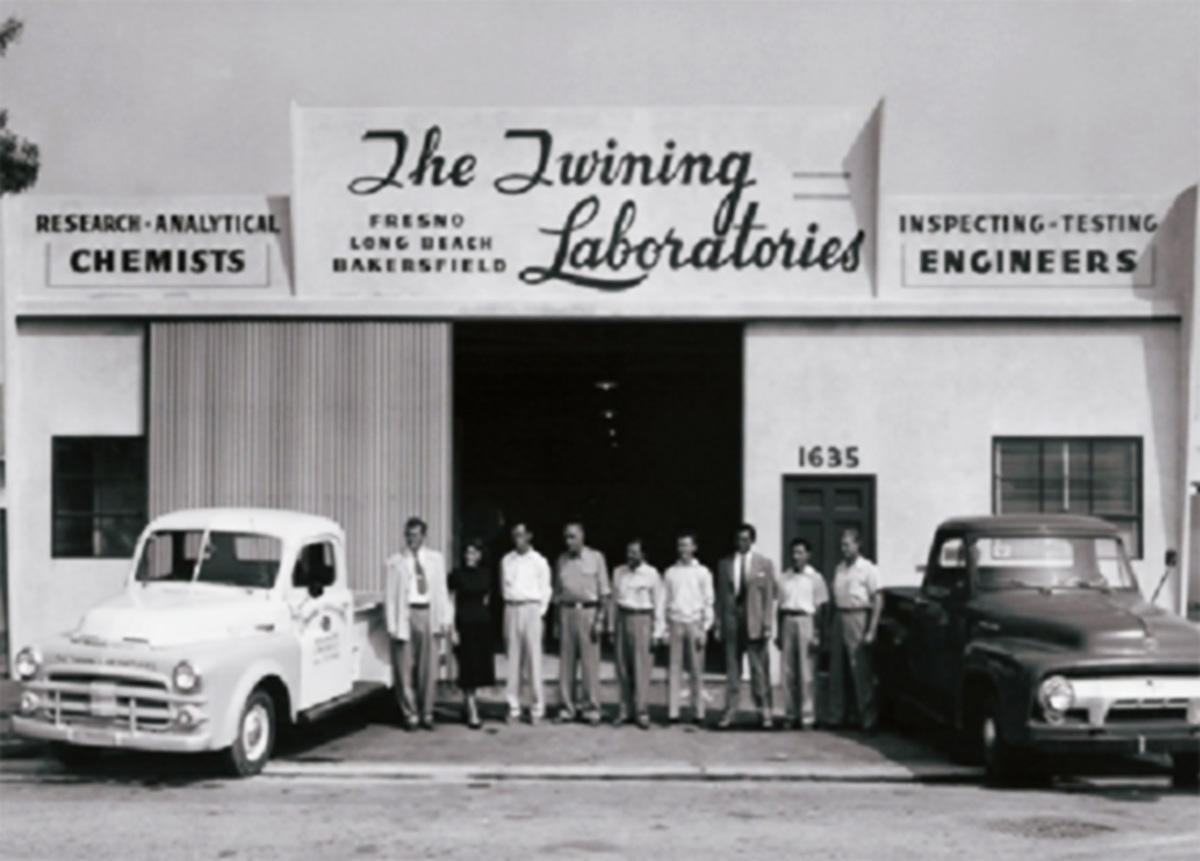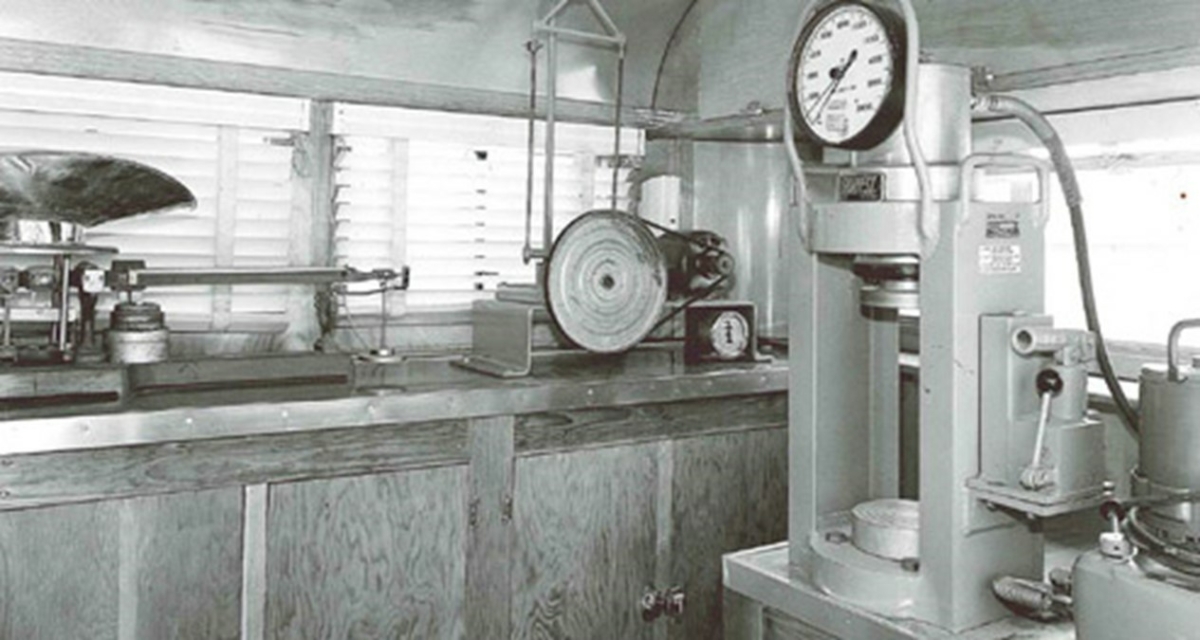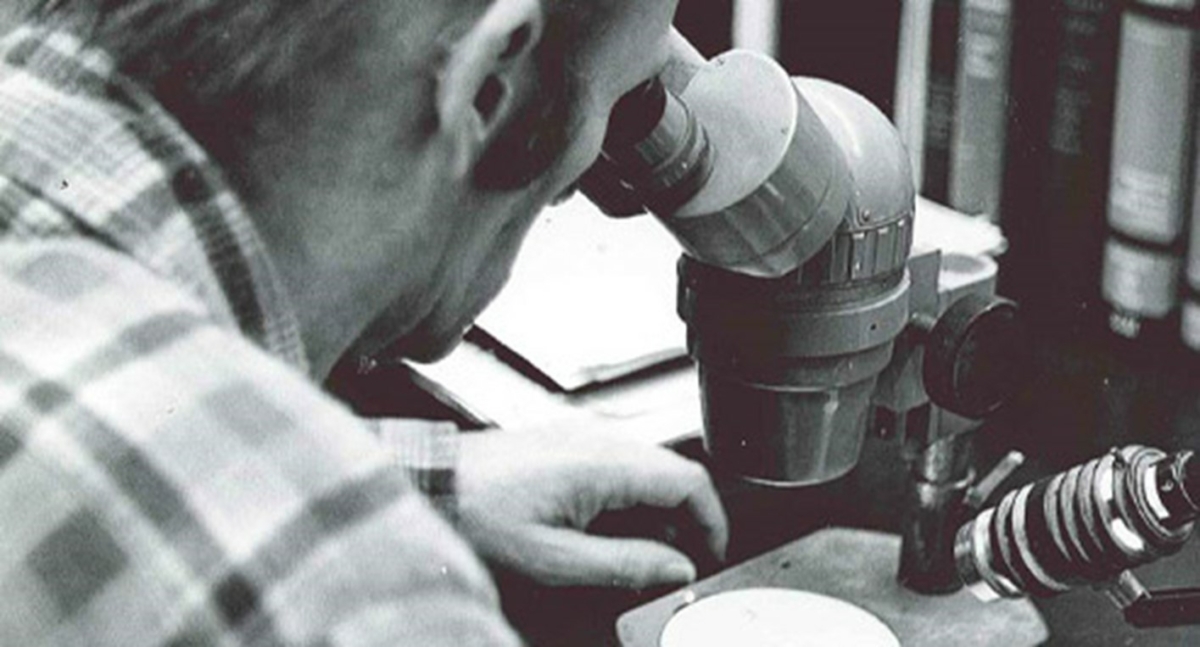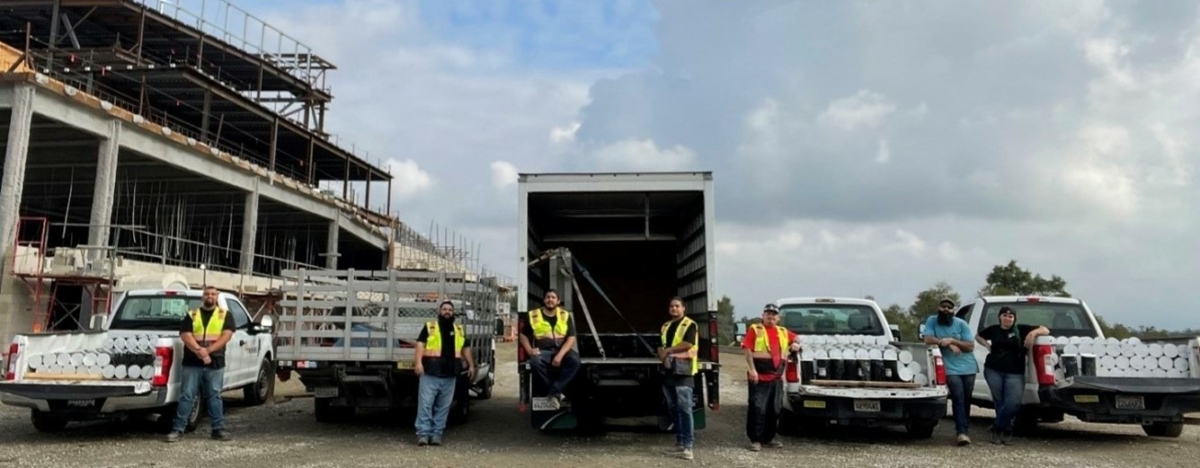Frederick E. Twining, Sr. was a very good chemist, and in Fresno, California in 1898, chemists worked on developing agricultural pesticides and improving public sanitation. Twining established Cutter Laboratories in Fresno to do just that. He also served as the State Sanitary Inspector, as well as the City Bacteriologist. Twining was also a very good businessman.
Then two devastating earthquakes hit California and scores of buildings collapsed. Twining pivoted Cutter Labs to focus on construction materials testing as the state worked to rebuild stronger and seismically resistant structures.
Twining’s work throughout the state, both through bacteriology and construction materials testing, earned the company a solid reputation for its scientific, analytical, and testing work. The diversity of the company’s pursuits gave rise to the slogan, “We test anything.” With that motto, Fred Twining established Twining Laboratories in 1913, and expanded into vaccine testing for cattle, food, drugs, and even sobriety.
Like Father, Like Son
Frederick W. Twining, Jr. took after his father and became a very respected chemist, joining Twining, Sr. in the now-family business. Upon his father’s death in 1945, Fred Twining, Jr. assumed leadership of the company. Nine years later in 1954, the ownership of Twining Laboratories was transferred to two younger family members, one of whom was Fred Twining’s grandson, Edward M. Twining, Sr., who then expanded the business and opened The Twining Laboratories of Southern California in Long Beach.
The mission of this new business was to determine by scientific investigation the properties and compositions of materials and soils in the field of general construction.
Twining Laboratories of Southern California found success, with more agencies and private firms coming to them for construction materials testing in their lab. Soon, they outgrew their facility on Gaylord Street in Long Beach and in 1965 moved to a much larger and sophisticated headquarters at 3310 Airport Way, where they’re located today.
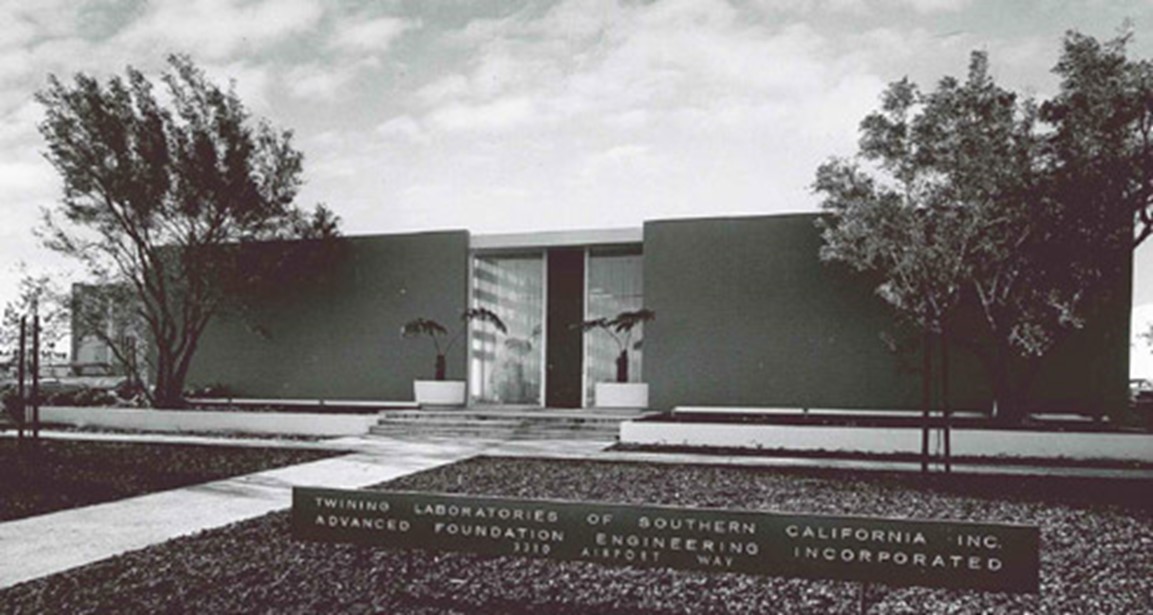
The original 1965 mid-century architecture of Twining Laboratories of Southern California remains very much in vogue today.
As the company expanded, the Twining philosophy emerged as one centered on finding and hiring the best people and treating them well, with great opportunity to grow and develop. Strong leadership, both through the Twining family and from employees, kept the company focused and on course.
Twining’s integration of academic and engineering knowledge, with an understanding of construction practices, has been the key to the firm’s success. A healthy evolution of methodology and an embrace of new technology help contribute to keeping Twining at the forefront of applied research and testing. Another factor contributing to the company’s continued growth is their responsiveness. Thanks to Twining’s size and breadth of experience, they have the depth to find the reasons why, and provide solutions as fast as scientifically possible.
In 1994, 40 years after creating Twining Laboratories of Southern California, Edward Twining, Sr. continued leading the company as C.E.O., now with his son, Edward “Butch” Twining, Jr., serving alongside him as President.
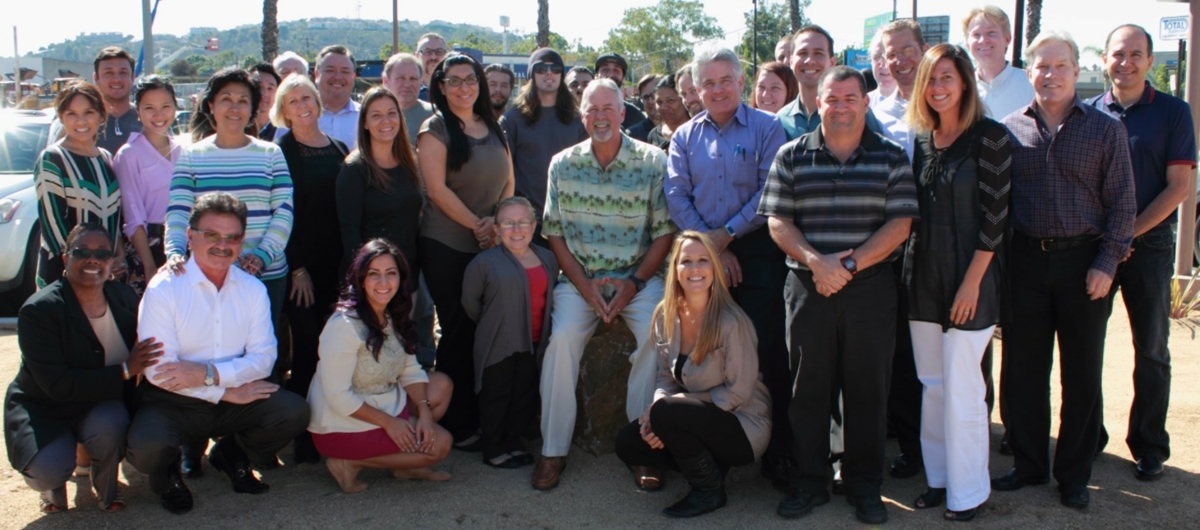
Butch Twining, seated center, and the Twining Long Beach Team celebrate his 35th year with the firm.
As the company ranks expanded, Butch Twining led the corporate culture to create a company that was enjoyable to work at, even fun, serving to create an atmosphere where people looked forward to coming in every morning. Amy Owens, Vice President of Human Resources, worked with Butch to develop the culture and ethics that the company embraces today.
Innovative to the Core
As the company grew, Twining Laboratories continued to innovate. In the 1980s, the firm began to research rapid and ultra-rapid strength concrete (RSC) for planned and emergency rehabilitation of transportation infrastructure.
And they continued to expand. In 1994, Boris Stein joined the firm as Senior Vice President of Applied Engineering & Research. In 2019 Twining, Inc. established a new division, Twining Concrete Insight, and Boris continues to lead it today as C.E.O.

Pictured is the second generation of Twining’s Mobile Laboratories designed for testing rapid strength concrete onsite.
In 1998, Twining Laboratories of Southern California developed and deployed the nation’s first mobile laboratories for onsite testing of fresh and hardened rapid strength concrete. Curing of the specimens is performed in conditions matching the temperature of RSC in place.
Twining was heavily involved in assisting Caltrans and industry with further advancing RSC and practices of fast-track pavement rehabilitation, saying, “You don’t have to rebuild the whole freeway when all that’s needed is a replacement of individual panels. It minimizes interruptions in traffic flow and saves Caltrans significant time and money.”
Soon after the launch of the mobile labs, the company brought two of the testing units out to the Caltrans I-10 Rehabilitation Project in Pomona to test the rapid strength concrete that was being placed. For the Pomona project, Twining developed the industry’s first quality control plan, which was successfully implemented by all parties involved in pavement rehabilitation.
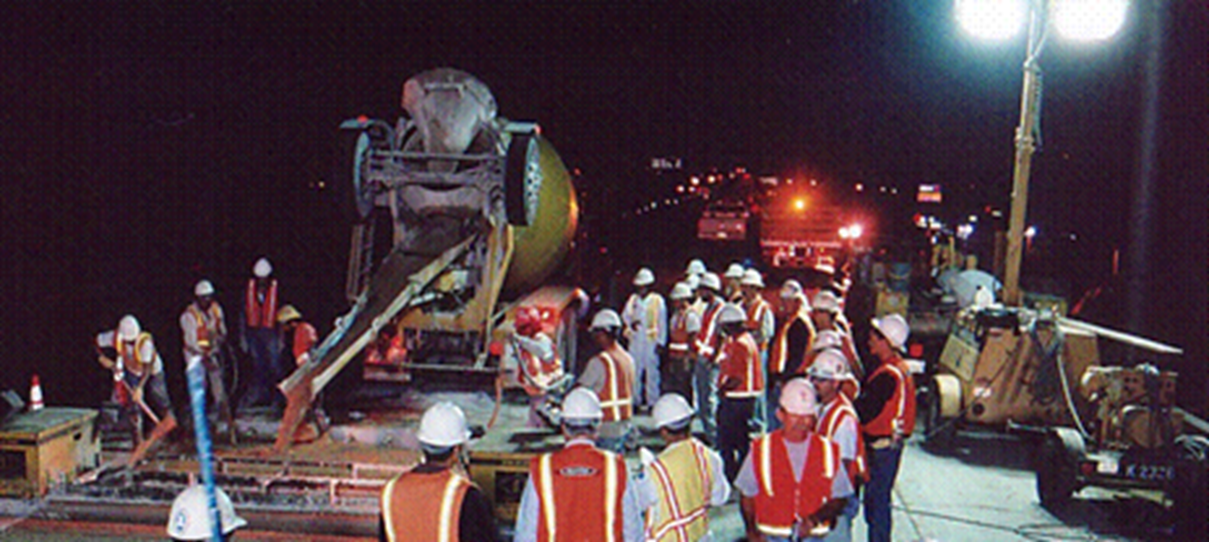
Crews poured and Twining tested as the RSC was placed on I-10 in Pomona in 1999. The teams celebrate as the last truckload of RSC is placed in this historic 55-hour-weekend pavement rehabilitation project, which received the ACPA National Award of Excellence.
RSC is also a great fit for emergency airfield pavement repairs, with Twining’s mobile testing units providing the required validated testing results.
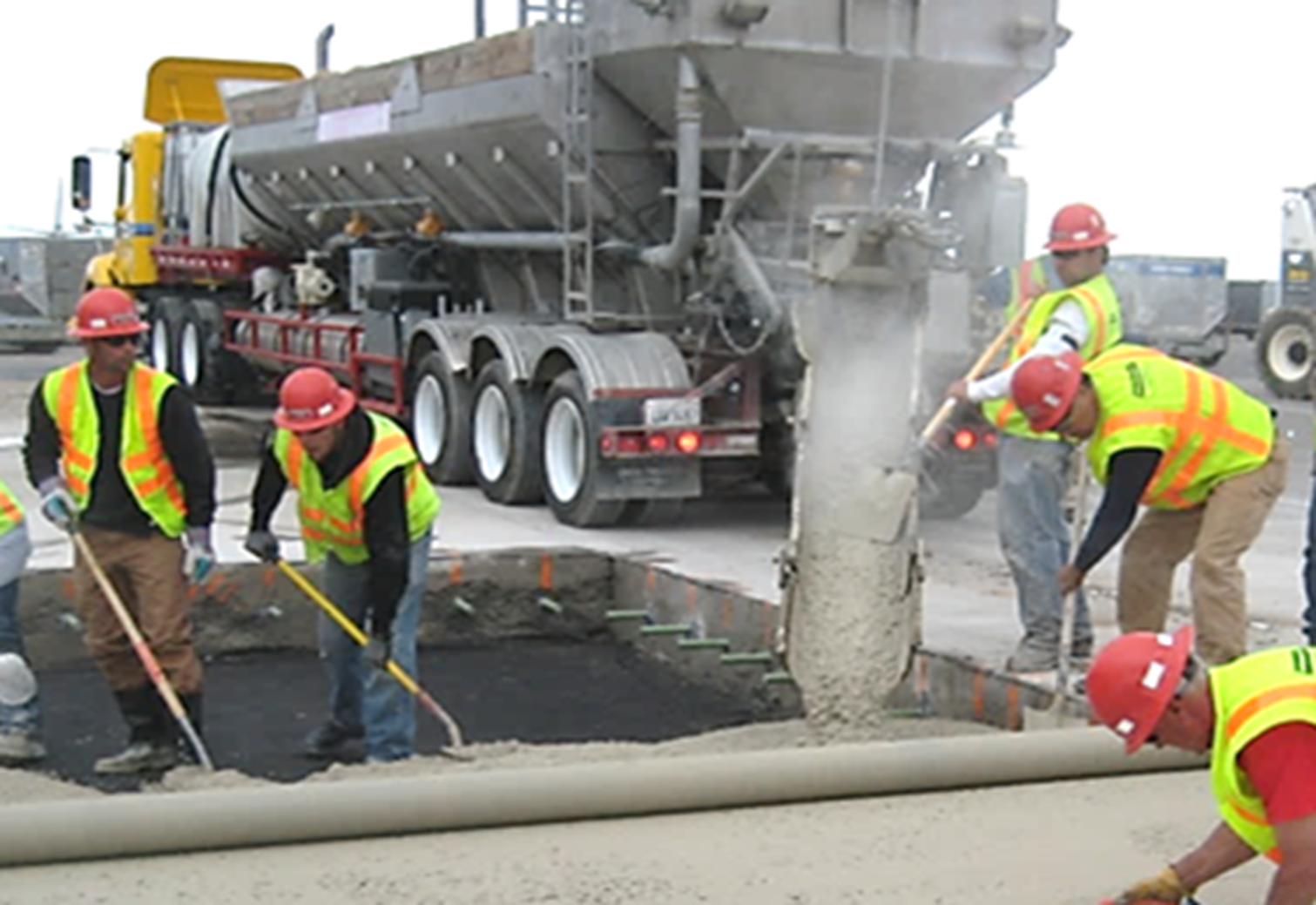
Ultra-rapid hardening concrete with calcium sulfoaluminate-belite cement is often produced by volumetric mixing trucks, as seen above on an emergency repair project at LAX.
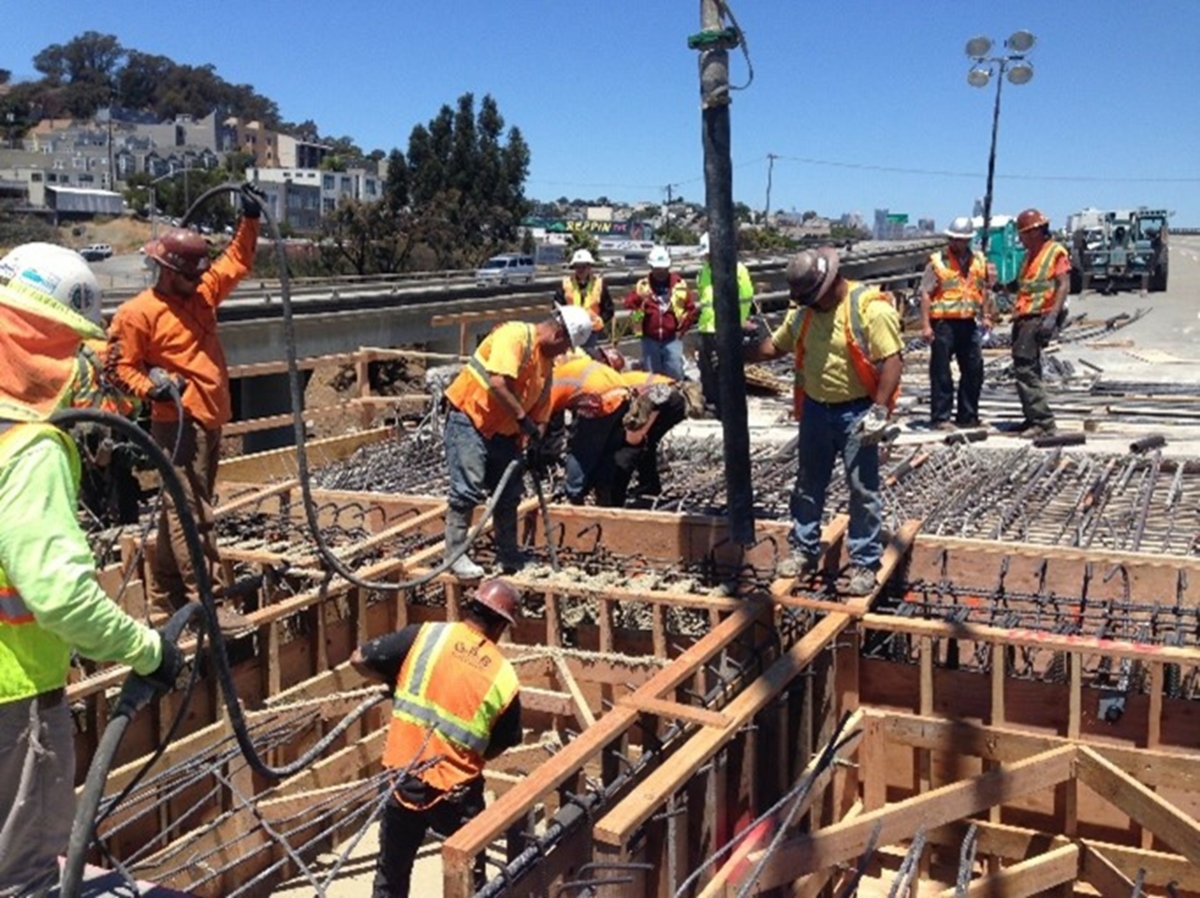
Fast-track construction of bridge hinges is yet another advantageous situation where rapid set concrete, with ongoing testing, reduces traffic diversion and serves to keep a project on schedule.
The Centennial Year of 1998 was celebrated with the opening of a San Diego office, followed two years later with Butch Twining becoming Chief Executive Officer and Robert M. Ryan stepping into the role of President.
An Inland Empire office was opened in 2006, along with the establishment of a corporate office just steps away from the Twining flagship laboratory. A Ventura location opened its doors in 2007, and Sacramento also welcomed a new Twining office, the first in Northern California. In 2009, Twining dropped “laboratories” from its name, becoming Twining, Inc.
In 2016, a nationwide scope became a component of the company’s goals as it began offering Quality System Auditing, Third-Party Product Testing, and Industrialized Buildings Services, thanks in great part to the acquisition of RADCO, Inc. whose offices were located in Long Beach, CA and Tampa, FL. During this period, Edward “Butch” Twining stepped into the position of Chairman of the Board, and Robert Ryan became C.E.O. and President.
Identifying concrete forensics as an essential applied engineering service, Twining incorporated petrographic analyses of aggregates, hardened concrete, and other cement-based construction materials to reveal the “Why” in structural and materials failures. To expand this service line and bring in a specialized team with expertise in the field, Twining acquired “DRP” Petrographic Practice in 2017 and gained a new office in Boulder, Colorado. DRP is currently a division of Twining Concrete Insight.
In 2017, Concord, CA became the site of Twining’s second Northern California office and serves the San Francisco Bay Area. In 2021, after decades of successfully growing, guiding, and invigorating the company, Butch Twining stepped out of the day-to-day operations but continued his involvement in the firm as Chairman Emeritus. C.E.O. Robert Ryan named Linas Vitkus Twining’s new President.
Today, Twining is a robust, multi-disciplinary services company, offering Construction Quality Control and Quality Assurance, Versatile Materials Testing and Analytical Evaluations, Geotechnical Engineering, Concrete Engineering and Concrete Insight Forensic and Condition Evaluation Services, Asphalt Materials Engineering, Third-Party Product Testing, Industrialized Building, Inspection and Plan Review, Quality System Auditing & Listing, Vibration and Geo-Instrumentation Monitoring, and Stormwater Inspection.
Over the past 125 years, Twining has responded to the changes and evolutions within the industry by expanding the breadth and depth of its services and bringing together a team of specialized and highly qualified scientists, engineers, inspectors, technicians, and subject matter experts to provide professional services needed by their clients. With a proud, multi-generational legacy, the Twining Team performs on the cutting edge of developing solutions to provide the data and answers for clients around the globe.


